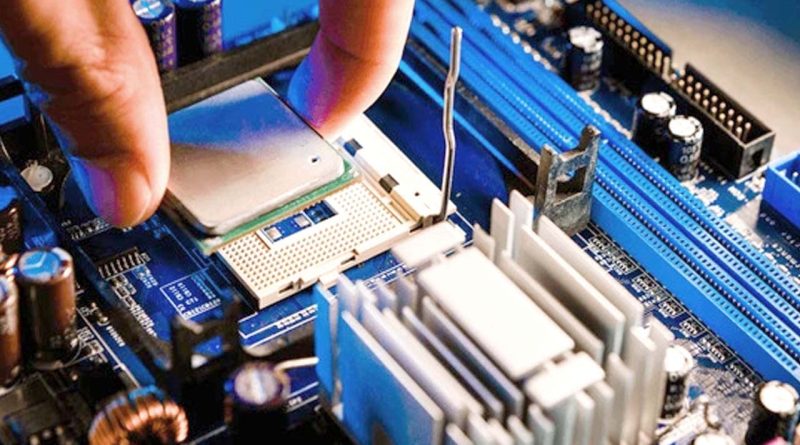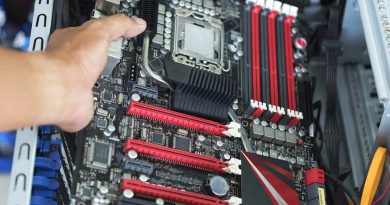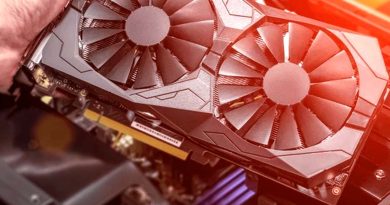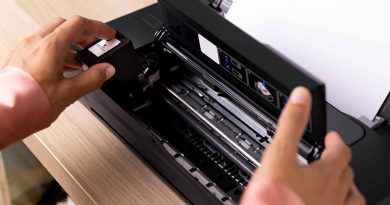How to Upgrade Desktop CPU with Safety and Efficiency
This is the ideal place if you want to know how to make your desktop PC run faster and smoother. From here, you can learn the easy steps on how to upgrade desktop CPU. By the end of this guideline, you’ll have the complete knowledge of how to upgrade CPU to boost your computer’s performance. So, let’s dive deep to discover the secrets of a successful CPU upgrade with efficiency!
Step 1: Arrange Tools and Materials
Before upgrading your desktop CPU, ensure you have all the essential tools and materials. Thus, arrange a compatible upgrade CPU, thermal paste, and a screwdriver. Also, it would help if you managed an anti-static wrist strap, but it is optional.
Step 2: Prepare a Proper Workspace
After arranging tools and materials, you need to choose a clean and well-lit workspace. The workspace should have enough lighting and a stable surface.
Step 3: Safety Precautions
Place the desktop computer on a surface and unplug all the power cables from the outlets. Then, wear the wrist strap if you can manage it. If you have no west strap, touch something metal like the desktop case to eliminate static electricity.
Step 4: Detach the Old CPU
Remove the side panel screws of your computer case and locate the CPU cooler. Then, unscrew the CPU cooler carefully and release it from the CPU by twisting it slightly. After releasing it, unlock the lever of the CPU socket. Then, lift the older CPU carefully to avoid any pin damage.
Step 5: Install the New CPU
Align the new CPU with the CPU socket on the motherboard. Then, release the CPU gently to fit the socket perfectly. Then, close the lever of the socket by pushing it. Also, you can put a little thermal paste on the top of the CPU.
Step 6: Place the CPU Cooler
Bring the CPU cooler back over the CPU and set it with proper alignment. Next, secure the CPU cooler in place by screwing it around with the motherboard. Then close your computer case and screw the side panel back after making sure everything is secured.
Step 7: Connect the Power and Test
Plug in your computer with the power cables again to check if everything functions correctly. When the computer starts running, monitor the temperatures to ensure the CPU is cooling correctly.
This is all about the process, and you learn how to upgrade desktop CPU with safety and efficiency. Now, your computer should run faster and handle more demanding tasks. Enjoy your improved computing experience!
Things Should Consider to Upgrade Desktop CPU
When considering how to upgrade the CPU, several important factors must be remembered. That will ensure a successful and effective upgrade with safety and efficiency. Let’s check the essential points in the next part of this article.
Compatibility:Before upgrading your CPU, ensure your existing motherboard CPU sockets can work with the new CPU. Also, check if your power supply unit can provide enough power for the new CPU. Additionally, check your RAM and is suitable for the new CPU to run smoothly.
Performance: You need to identify the reason for upgrading your CPU. Do you need faster multitasking or improved computer productivity? Choose a compatible CPU that suits your specific requirements and needs accordingly.
Budget: Set a budget for your CPU upgrade, as it comes in various price ranges. Besides, more powerful CPUs may generate more heat, so you should buy a better cooler too.
BIOS Update: Check whether a BIOS update is needed to support the new CPU that you want to install. Most motherboard manufacturers release BIOS updates to include compatibility with newer processors.
Operating System: Most modern operating systems are compatible with a wide range of processors. However, verifying that your new CPU is compatible with your existing operating system is always a good idea.
Backup: You should back up your important data before upgrading the CPU. Typically, upgrading CPUs doesn’t affect data, but it’s better to be safe before upgrading it.
FAQs
Can I change my CPU without reinstalling Windows?
You can change your CPU without reinstalling Windows or your computer’s operating system. Before doing this, you should ensure the compatibility of the new CPU with the motherboard and memory. However, if your computer has changed significantly, you should reinstall the operating system.
Can I upgrade my desktop processor from i5 to i7 easily?
You can upgrade your desktop processor from an i5 to an i7 without changing components. But your computer’s motherboard must be compatible with the new i7 process. Also, your power supply needs the capacity to handle the i7 CPU. Besides, the cooling system of the CPU has to be good enough.
Throughout this article, you have discovered how to upgrade CPU on a desktop computer. If you want to know how to install case fans to the motherboard of a desktop PC, click here for more solutions.



